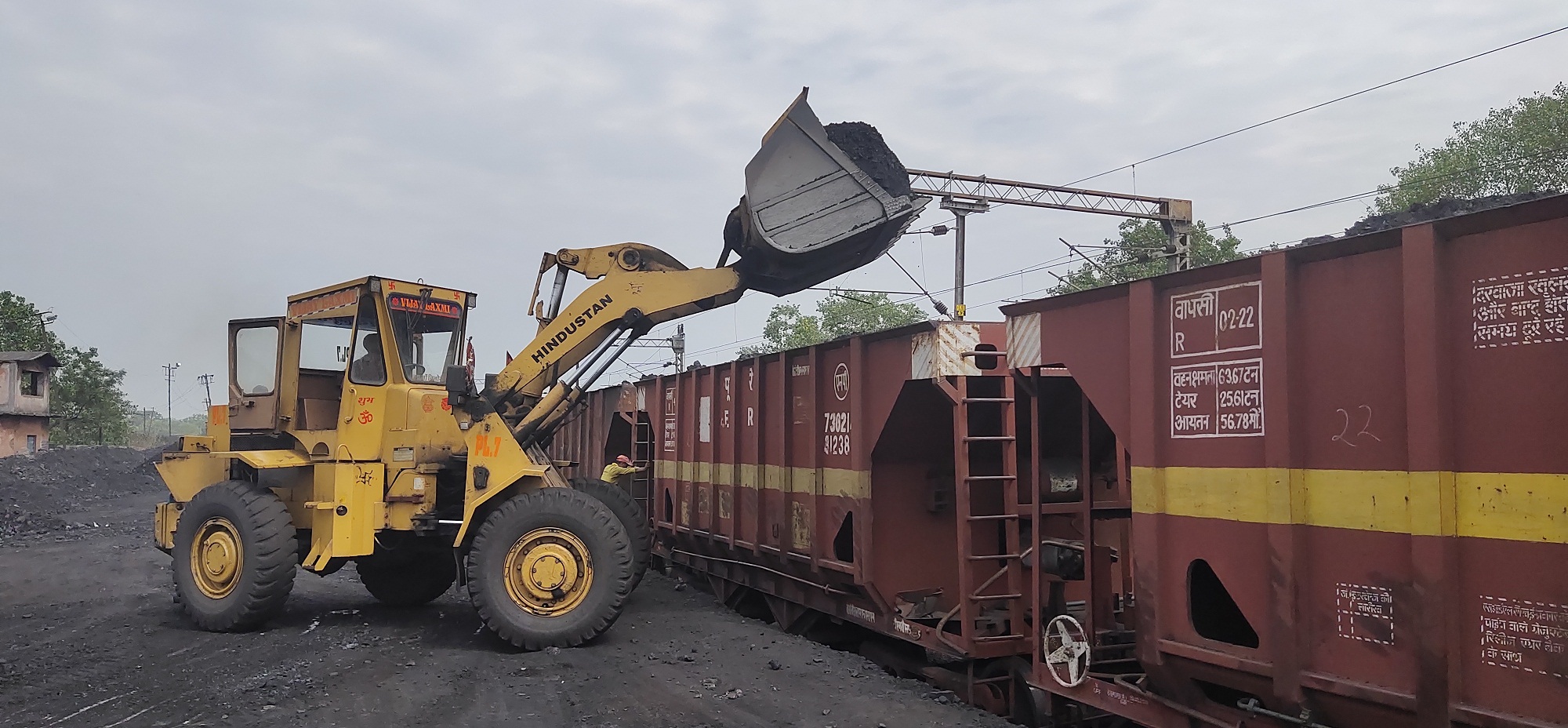- Email: vijaylaxmitrans@gmail.com
- Call Us: 0326-2371377
- 7004147750
Rake Loading
Wagon loading systems consist of various facilities for loading and unloading materials from and in the wagons.
There are two systems in which rake loading and unloading is handled precisely.
1. In this the rake will be stationary and the loader will be moving.
• The loading system used under this is can be of two types
A. The mobile loader will be travelling for the complete length of the rake
B. Series of loaders will be provided with limited travel time and will load particular number of loaders at a time.
2. Rake will be moving and the loader will be stationary.
• This loading system is generally known as rapid loading system or flood loading system.
Rake Loading: - Rake loading system in which the coals are loaded in particular orders in the stationary rakes by travelling tripper. The travelling tripper will be travelling along the conveyor for loading the material into the wagons. The storage silo will be located at the tail end of this conveyor and feeds the material continuously onto the conveyor. The material will be loaded into the wagon through the loading chute. The travelling tripper moves forward while discharging the material into the wagon at a constant speed. When the loading chute approaches the end of the wagon, the loading chute changes over from one wagon to the next wagon and thus there will not be any spillage between the wagons. The loading operation will continue to the next wagon without any interruption. This process will be continued till the loading of the last wagon of the rake.
Rake Capacity: - Generally one rake consists of about 58 wagons and capacity of each wagon is 55 tones. The total quantity of material in each rake would be about 3200 tones. The capacity of the storage silo will be generally equal to one rake load of material to enable loading of the rake without any interruption.
How is it done?
Step – 1
Well the very first phase starts from where the coal is risen from the coal mines and plants, which then are carried by loading vehicles to the loading point.
Step – 2
When the coal material reaches the loading point by the carriers, after that the coal is unloaded to the large carriers which then travels to the dumping station to unload.
Step – 3
At the dumping station, coals are dumped by the large carriers.
Step – 4
After coming to dumping station, the coal is then further refined by processing it through the crusher machine.
Step - 5
After the coal is finalized by crushing, according to work order – The coal is dispatched.
Step - 6
At the end of every month RR Report is generated by B.C.C.L
Step - 7
Bill Raised by VLT.
VLT works in collaboration with companies’ like A.M.P.L, B.C.C.L, and HINDUSTAN OVERSEAS PVT. LTD. And P.T.P.L PVT. LTD. To help fulfill the need of coal energy consumption throughout India.


